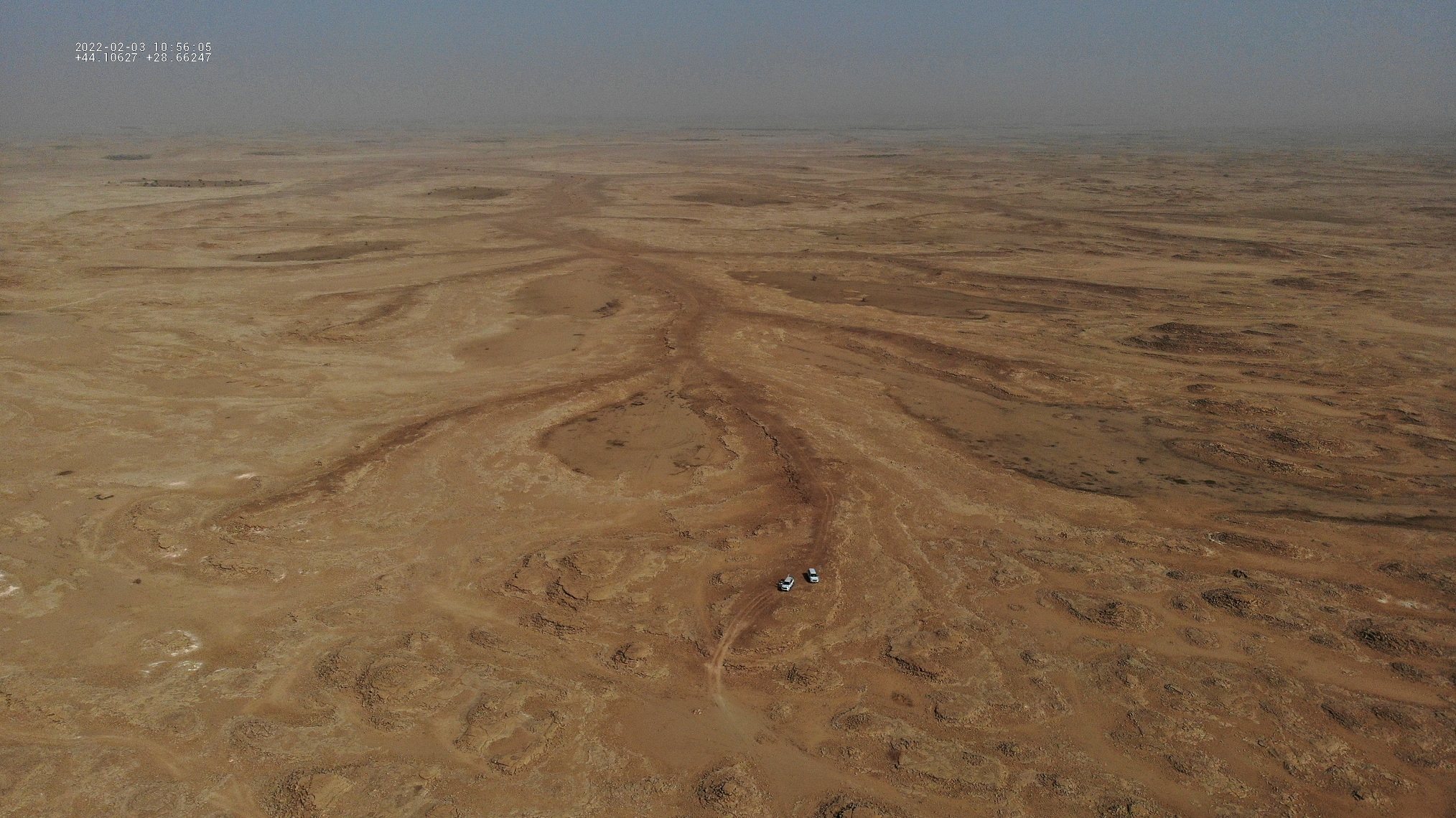Abdallah S. Zaki
Geomorphology, Sedimentology, Paleoclimatology, Planetary Surfaces
Research
Research Overview
My research is driven by a simple idea: climate and tectonics set the stage for how water shapes landscapes—and landscapes, in turn, shape habitability. I read the rock record of ancient rivers, lakes, and deserts on Earth and Mars to learn when and where water flowed, how climatic and tectonic forcing built and preserved sedimentary archives, and what made places livable. I integrate geomorphology, sedimentology, climate models, geochronology, archaeological evidence, and paleoenvironmental records to answer three fundamental questions: How do water-formed landscapes record climate and tectonics? Where—and how—did water move across the solar system? What makes a region habitable?
This integrated approach bridges planets, timescales, and disciplines. Below are the three main themes that frame my research.
Planetary Surfaces & Sedimentary Processes
On early Mars, water was an active geologic agent: it carved river channels, pooled in lakes, and may have filled ocean-scale basins. Yet the hydroclimatic setting—how often, how long, and under what conditions these systems operated—remains uncertain. I reconstruct ancient rivers, lakes, and oceans on Mars and read their sedimentary archives to understand when and where water moved, how sediments were produced, transported, and preserved, and what that meant for past habitability. By comparing these records with terrestrial (early Earth and modern desert) analogs, I infer the roles of climate and tectonics and show where—and how—water once shaped the martian surface.
Zaki, A. S., Wang, D., Baker, S. R., Grotzinger, J. P., Dickson, J., & Lamb, M. P. (2025). Mars’ hourglass landforms as local source‐to‐sink fluvial systems. Journal of Geophysical Research: Planets, 130(7). https://doi.org/10.1029/2024je008745
Zaki, A. S., Edgett, K. S., Pajola, M., Kite, E., Davis, J. M., Mangold, N., Madof, A. S., Lucchetti, A., Grindrod, P., Hughes, C. M., Sangwan, K., Thomas, N., Schuster, M., Gupta, S., Cremonese, G., & Castelltort, S. (2023). Prolonged record of hydroclimatic changes at Antoniadi Crater, Mars. Journal of Geophysical Research: Planets, 128(7). https://doi.org/10.1029/2022je007606
Zaki, A. S., Davis, J. M., Edgett, K. S., Giegengack, R., Roige, M., Conway, S., Schuster, M., Gupta, S., Salese, F., Sangwan, K. S., Fairén, A. G., Hughes, C. M., Pain, C. F., & Castelltort, S. (2022). Fluvial depositional systems of the African humid period: An analog for an early, wet Mars in the Eastern Sahara. Journal of Geophysical Research: Planets, 127(5). https://doi.org/10.1029/2021je007087
Zaki, A. S., Pain, C. F., Edgett, K. S., & Castelltort, S. (2021). Global inventory of fluvial ridges on Earth and lessons applicable to Mars. Earth-Science Reviews, 216, 103561. https://doi.org/10.1016/j.earscirev.2021.103561
Zaki, A. S., Pain, C. F., Edgett, K. S., & Giegengack, R. (2018). Inverted stream channels in the Western Desert of egypt: Synergistic remote, Field Observations and laboratory analysis on Earth with applications to Mars. Icarus, 309, 105–124. https://doi.org/10.1016/j.icarus.2018.03.001


Earth Surface Processes and Paleohydrology
Arid regions such as the Sahara and Arabia were periodically revived by humid pulses: rivers reoccupied channels, and lakes rose in both closed and open basins. Yet the spatiotemporal evolution of these systems—and the climatic and tectonic controls on their magnitude, frequency, and duration—is still poorly constrained. I quantify how climate variability and tectonics shape water-formed landscapes using field mapping, remote sensing, geochronology, and climate modeling. By reading their sedimentary archives, I track floods, river formation and reactivation, and lake expansions to determine when, where, and why these landscapes switched between dry and wet phases—insight essential for predicting long-term landscape responses to climatic perturbations.
Zaki, A. S., Delaunay, A., Baby, G., Haghipour, N., Blanchet, C., Dallmeyer, A., Sternai, P., Woor, S., Wani, O., Khalil, H., Schuster, M., Petraglia, M., Sylvestre, F., Peyrotty, G., Ali, M., Van Buchem, F., Afifi, A. M., & Castelltort, S. (2025). Monsoonal imprint on late quaternary landscapes of The rub’ al khali desert. Communications Earth & Environment, 6(1). https://doi.org/10.1038/s43247-025-02224-1
Zaki, A. S., King, G. E., Haghipour, N., Giegengack, R., Watkins, S. E., Gupta, S., Schuster, M., Khairy, H., Ahmed, S., El-Wakil, M., Eltayeb, S. A., Herman, F., & Castelltort, S. (2021). Did increased flooding during the African humid period force migration of modern humans from the Nile Valley? Quaternary Science Reviews, 272, 107200. https://doi.org/10.1016/j.quascirev.2021.107200
Madof, A. S., Ryan, W. B., Bertoni, C., Laugier, F. J., Zaki, A. S., & Baumgardner, S. E. (2022). Time‐probabilistic approach to the late Miocene Messinian Salinity crisis: Implications for a disconnected paratethys. Terra Nova, 34(5), 395–406. https://doi.org/10.1111/ter.12579
Zaki, A. S., & Giegengack, R. (2016). Inverted topography in the southeastern part of the Western Desert of egypt. Journal of African Earth Sciences, 121, 56–61. https://doi.org/10.1016/j.jafrearsci.2016.05.020


Climate–Landscape–Human Interactions
Wet pulses periodically turned deserts such as the Sahara and Arabia into savanna-like environments, stitched lakes across basins, and reconnected rivers—opening corridors and stepping-stone habitats for early humans. As climates dried, those routes narrowed or closed. I link river and lake dynamics with archaeological evidence and paleoenvironmental records to test when and where water corridors enabled movement and settlement, and how climate shifts opened or closed these pathways.
Zaki, A. S., King, G. E., Haghipour, N., Giegengack, R., Watkins, S. E., Gupta, S., Schuster, M., Khairy, H., Ahmed, S., El-Wakil, M., Eltayeb, S. A., Herman, F., & Castelltort, S. (2021). Did increased flooding during the African humid period force migration of modern humans from the Nile Valley? Quaternary Science Reviews, 272, 107200. https://doi.org/10.1016/j.quascirev.2021.107200
Zaki, A. S., Delaunay, A., Baby, G., Haghipour, N., Blanchet, C., Dallmeyer, A., Sternai, P., Woor, S., Wani, O., Khalil, H., Schuster, M., Petraglia, M., Sylvestre, F., Peyrotty, G., Ali, M., Van Buchem, F., Afifi, A. M., & Castelltort, S. (2025). Monsoonal imprint on late quaternary landscapes of The rub’ al khali desert. Communications Earth & Environment, 6(1). https://doi.org/10.1038/s43247-025-02224-1






